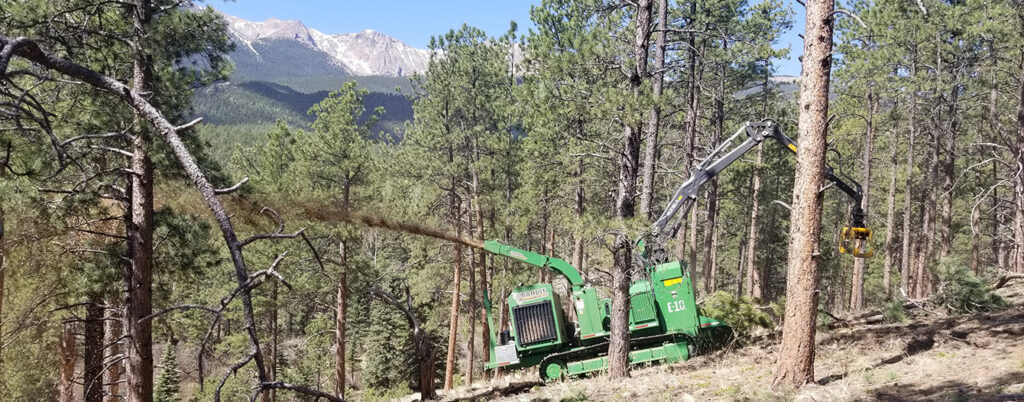
Many of us take drinking water for granted. Just turn on the tap and let it flow. Actually a lot of work, infrastructure and partnerships have to come together to allow that water to freely fill up our water bottles. This is especially important if you live in a unique city like Colorado Springs that isn’t situated next to a major river with freshwater streaming by.
How do wildfires affect drinking water?
The water that quenches the thirst of Colorado Springs’ nearly 500,000 inhabitants travels a long way to get to individual homes. Much of it comes from Turquoise Lake and Homestake Reservoir on the other side of the Continental Divide. The water travels by pipeline to three reservoirs on the north slope of Pikes Peak, then to a water treatment site, and finally enters the municipal water source. So it’s crucial to protect those reservoirs from contamination.
Wildfires can do real harm to watersheds by creating conditions that allow sedimentation to flow into reservoirs and water sources. When a wildfire completely burns an area, the trees that once held soil in place are gone and the ash, soil and debris wash into the water. This causes a strain on water treatment infrastructure. This is why the CSFS manages forests to be more resilient to a catastrophic wildfire, such as the Waldo Canyon Fire in 2012. This wildfire burned more than 18,000 acres and resulted in serious sedimentation and mudslides that deteriorated water quality and damaged infrastructure.
How do foresters reduce the risk of wildfire in crucial watersheds?
You may ask, what does the CSFS have to do with drinking water? The answer is quite a bit, actually. One example is the Lonesome Square Project near Pikes Peak. Here the CSFS works with Colorado Springs Utilities (CoSU) and the Pikes-San Isabel National Forests & Cimarron and Comanche National Grasslands (PSICC) under a Good Neighbor Agreement to reduce the impacts of a catastrophic wildfire on this municipal watershed.
CSFS foresters identify priority areas, create a scope of work, develop a forest prescription and oversee the contractors who win the work. The forest prescription for the Lonesome Square Project includes the following activities:
- Create ridgetop fuel breaks. Removing flammable materials such as vegetation at the top of ridges helps slow the spread of wildfires. The CSFS has been doing this work with CoSU for the last 30 years and covering about 3,500 acres.
- Thin from below. Contractors thin all trees in the intermediate class, from 4 to 16 inches in diameter. This results in a forest with both old and young trees, and it removes the ladder fuels that contribute to the running crown fires that can be big, scary and devastating.
- Reduce tree density. This returns the forest to historic levels of density. Increasing space between trees reduce risk of crown fires, and it allows more light in to the forest floor, which helps grasses and forbs grow.
By managing the forest in this way, the CSFS improves the health and resiliency of this forest. Forest management is crucial for forest health and consequently for all the other life, including humans, that rely on healthy watersheds and clean drinking water!

